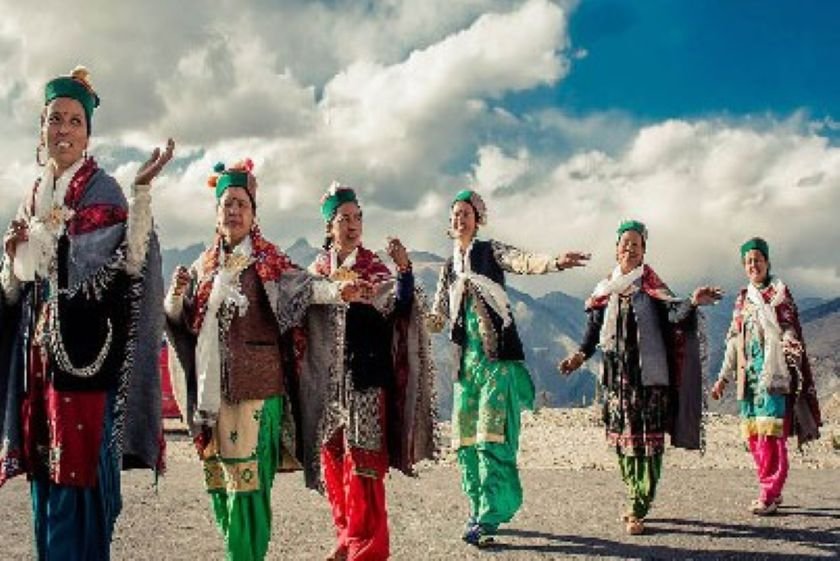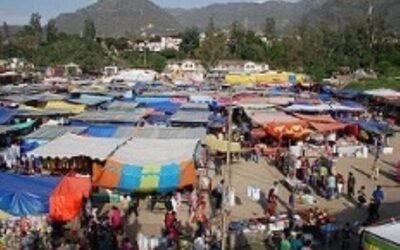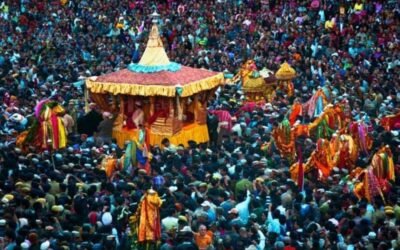📍 Location: Villages across Kinnaur District, especially Nichar, Kalpa, and Sangla
📅 Season: January (on or around Magh Sankranti, lunar calendar)
A sacred farewell when village deities retreat to the heavens for winter, and households invoke harmony and rest
🌨️ When Gods Ascend and Silence Returns
Sazo, also known as Saaz, is Kinnaur’s beautiful way of saying farewell to its local deities (devtas) for the winter months. As snow deepens and passes close, villagers believe the gods retreat to their celestial abodes—and must be bid adieu with respect, music, fire, and feast.
🗻 This annual event isn’t a mourning—it’s a seasonal intermission, ensuring balance in the spiritual ecosystem of the valley.
🔱 Rituals of Farewell and Fire
The heart of Sazo lies in its ceremonial depth:
- Morning Bath Rituals: Families cleanse homes and themselves, preparing for the day’s devotion
- Devta Invocation: Village priests and elders perform pujas for the presiding deity, often inside family temples or community dhars
- Flame Offering: A lamp (diyo) is lit in every home facing the sky—symbolizing the path the devta will follow to reach heaven
- Food Offerings: Special dishes including chhuli, maash, and sweet rice are offered, and leftovers shared with neighbors and animals
As twilight nears, chants, drums, and ceremonial conch shells echo from hilltops, bidding the gods safe passage.
🪶 Culture in Contemplation
Unlike exuberant fairs, Sazo is introspective, gentle, and deeply symbolic:
- Elders Tell Stories: About past years when the devtas brought rain or protected fields
- Children Participate: In helping set up lamps, serve prasad, and dress in traditional woolens
- Floral Offerings: Winter blossoms or sacred leaves collected even in snow to adorn the shrines
The entire village takes a collective pause, honoring divine rhythm and earth’s quiet season.
🍛 Food as Prayer and Connection
Meals on Sazo are simple yet sacred:
- Kinnauri Feast Dishes: Siddu, buckwheat roti, chhuli chutney, and dried apple compotes
- Seasonal Breads: Made from fermented barley or wheat
- Shared Plates: Meals are passed across homes as acts of goodwill, often with elder blessings and poetic wishes
Even domestic animals are fed sweet grains as symbolic recipients of divine gratitude.
✨ Why Sazo Holds the Heart
Sazo teaches:
- The beauty of impermanence—welcoming divine rest
- Ecological rhythm—letting mountains breathe under snow
- Spiritual simplicity—no excess, just heartfelt farewell
It’s a hymn to winter, a song of silence, and a cultural ritual that preserves Kinnaur’s mystical soul.
🧭 Plan Your Experience
To witness Sazo authentically:
- Best Time: Mid-January, on Magh Sankranti (check lunar calendar)
- Where to Go: Villages like Nichar, Kalpa, Rarang, or Sangla—homestays with cultural immersion offer real insight
- Travel Tip: Dress warmly, attend morning pujas, and join elders for folklore narration in fireside gatherings
- Pro Tip: Participate in lighting the evening lamp—it’s a deeply moving moment of collective breath




